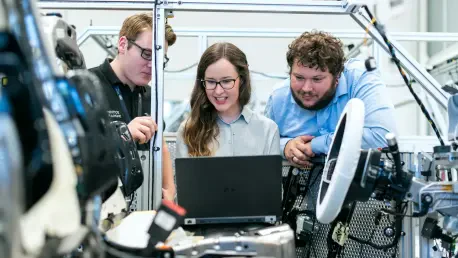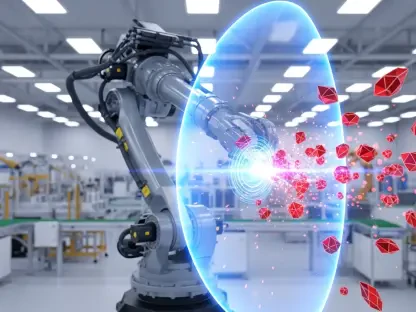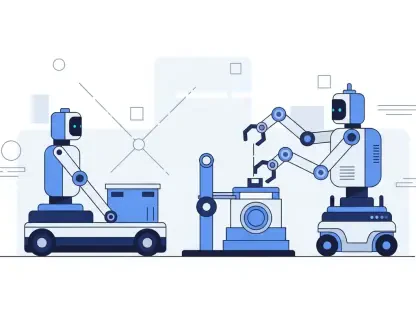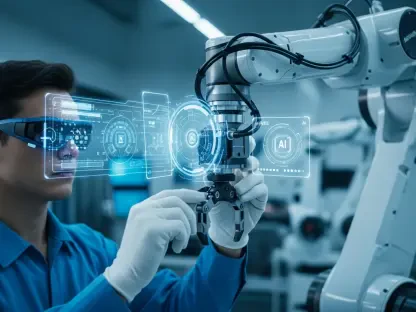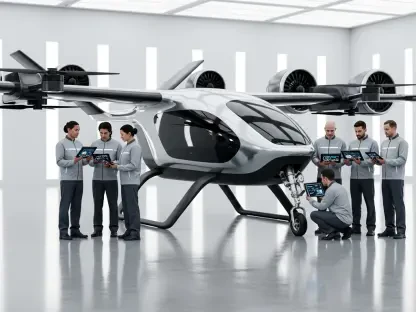The automotive industry stands at a pivotal crossroads, where the roar of engines is increasingly accompanied by the hum of digital innovation, marking a seismic shift driven by software that is redefining the very essence of mobility. No longer just a collection of mechanical parts, today’s vehicles are transforming into sophisticated platforms often described as “computers on wheels,” with software acting as the core of this evolution. The global automotive software market, currently valued at USD 28.5 billion, is projected to skyrocket to USD 67.2 billion by 2035, achieving a compound annual growth rate (CAGR) of 9.0%. This remarkable growth underscores a broader trend: software is not merely an add-on but a fundamental force redefining safety, efficiency, and the entire driving experience. From enhancing connectivity to powering autonomous systems, software is steering the industry toward a future where mobility is smarter and more sustainable. This transformation raises critical questions about how these technologies are reshaping vehicles and what challenges lie ahead in this digital journey.
Redefining Vehicles with Software Innovation
The transition from hardware-dominated automotive design to software-centric models represents a profound change in how vehicles are conceptualized and built. Modern cars rely heavily on software to manage everything from engine performance to user interfaces, fundamentally altering the competitive landscape for manufacturers. Infotainment systems, for instance, now integrate seamlessly with smartphones, offering real-time navigation and streaming services that elevate the in-car experience. Beyond entertainment, over-the-air (OTA) updates allow for continuous improvements and bug fixes without the need for physical visits to service centers. This shift also supports the rise of electric vehicles (EVs), where software optimizes battery management and powertrain efficiency. As a result, manufacturers are compelled to rethink their strategies, prioritizing digital innovation to meet consumer expectations and stay ahead in a rapidly evolving market. The focus on software is not just a trend but a structural change that is setting new standards for vehicle functionality.
This software-driven paradigm also impacts how vehicles are developed and maintained over their lifecycles, creating a dynamic ecosystem of constant evolution. Unlike traditional models where a car’s features were fixed at purchase, today’s vehicles can adapt and improve long after they leave the showroom, thanks to cloud-based platforms and digital updates. This capability extends to critical systems like powertrain control, ensuring that performance remains optimal even as hardware ages. Moreover, the integration of artificial intelligence (AI) into software enables predictive maintenance, alerting drivers to potential issues before they become serious problems. Such advancements reduce downtime and enhance reliability, offering tangible benefits to both consumers and manufacturers. The move toward software-defined vehicles signals a departure from static engineering, ushering in an era where adaptability and digital intelligence are paramount, reshaping the very definition of what a car can be in the modern age.
Advancing Safety Through Autonomous Technologies
One of the most significant impacts of automotive software lies in the realm of safety, particularly through Advanced Driver Assistance Systems (ADAS), which are becoming integral to modern vehicles. These systems employ sophisticated algorithms to process data from an array of sensors and cameras, enabling features like adaptive cruise control, lane-keeping assistance, and emergency braking. Such technologies are not merely conveniences but vital tools that reduce human error, a leading cause of road accidents. As software continues to evolve, it paves the way for higher levels of autonomy, with the potential to transform urban landscapes by minimizing traffic collisions and optimizing flow. Regulatory bodies worldwide are increasingly mandating the inclusion of these safety features, recognizing their role in protecting lives. The push for safer roads through software-driven solutions is a clear indicator of how technology is prioritizing human well-being in mobility.
Beyond ADAS, the development of fully autonomous driving technology represents the frontier of automotive software’s potential to revolutionize transportation. While still in the testing and regulatory phases, self-driving systems rely on complex software to interpret vast amounts of environmental data in real time, making split-second decisions that mimic or surpass human capabilities. This technology aims to redefine personal and commercial transport, potentially reducing the need for personal car ownership through shared autonomous fleets. However, achieving this vision requires overcoming significant hurdles, including public trust and the perfection of software reliability under diverse conditions. The journey toward autonomy is also supported by machine learning, which allows systems to improve over time as they encounter new scenarios. This continuous learning process highlights software’s unique ability to adapt, positioning it as a cornerstone of a future where vehicles operate with unprecedented independence and safety.
Navigating Connectivity and Cybersecurity Challenges
As vehicles become increasingly connected through the Internet of Things (IoT) and vehicle-to-everything (V2X) communication, software plays a dual role in enhancing functionality while exposing new vulnerabilities. Connectivity enables real-time diagnostics, traffic updates, and personalized driver experiences, turning cars into hubs of digital interaction. However, this interconnectedness also opens the door to cyber threats, with potential breaches risking not just data privacy but also physical safety if critical systems are compromised. Automotive software now incorporates advanced encryption and security protocols to safeguard against such risks, reflecting the industry’s recognition of cybersecurity as a non-negotiable priority. The balance between leveraging connectivity for innovation and protecting against digital threats is a defining challenge, shaping how software is developed and deployed in this space.
The advent of OTA updates offers a powerful solution to address cybersecurity concerns while maintaining vehicle performance in a connected world. These updates allow manufacturers to patch security flaws, introduce new features, and improve existing systems remotely, ensuring that vehicles remain secure and up-to-date without inconvenient service visits. This capability is particularly crucial as the complexity of automotive software grows, with millions of lines of code running modern cars. However, the reliance on OTA updates also necessitates robust infrastructure to prevent disruptions during updates and to protect against malicious interference. Additionally, the industry faces the task of standardizing security measures across diverse platforms to ensure consistent protection. The focus on cybersecurity within automotive software underscores a broader commitment to building trust in connected technologies, ensuring that the benefits of digital integration are not undermined by preventable risks.
Exploring Regional Variations in Software Adoption
The growth and adoption of automotive software are not uniform, with distinct regional dynamics influencing how this technology transforms the industry globally. North America stands at the forefront, driven by substantial investments in research and development, coupled with strategic collaborations between traditional automakers and technology giants from Silicon Valley. This region benefits from a strong technological infrastructure that accelerates the integration of cutting-edge software into vehicles. The emphasis here is often on autonomous driving and premium infotainment systems, reflecting consumer demand for high-end features. Government support for innovation and a culture of early adoption further cement North America’s leadership in this space. These factors create a fertile ground for testing and scaling software solutions that could set global benchmarks, highlighting the region’s pivotal role in driving industry-wide change.
Meanwhile, Europe and Asia-Pacific present their own unique contributions to the automotive software landscape, shaped by regulatory and market-specific priorities. Europe, with its stringent emission and safety regulations, focuses on software that supports electric mobility and compliance, particularly in countries like Germany and France where sustainability is a key driver. In contrast, Asia-Pacific, led by powerhouses such as China and Japan, is witnessing rapid growth fueled by massive EV adoption and government-backed initiatives for smart mobility. The region’s robust semiconductor industry also supports the development of advanced software for connected vehicles. Both regions, though distinct in their approaches, demonstrate how local policies and infrastructure can accelerate or shape the trajectory of software integration. This diversity in regional strategies illustrates a global mosaic where automotive software evolves in response to varying needs and opportunities.
Charting the Competitive Terrain and Industry Hurdles
The competitive landscape of automotive software is a vibrant arena where traditional manufacturers and technology behemoths vie for dominance, each bringing unique strengths to the table. Established players like Bosch and Continental capitalize on decades of industry expertise to embed software directly into vehicle systems, focusing on reliability and integration. Conversely, tech giants such as Microsoft, Google, and NVIDIA introduce transformative AI and cloud-based solutions, pushing the boundaries of what software can achieve in vehicles. This convergence of automotive and tech sectors fosters innovation but also intensifies competition, as companies race to define the standards for software-defined vehicles. The diversity of players ensures a rich ecosystem of ideas, yet it also complicates collaboration and compatibility across different platforms, posing a challenge to seamless progress.
Despite the promise of automotive software, significant obstacles remain that could temper its transformative potential if not addressed strategically. High development and integration costs present a barrier, particularly for smaller manufacturers seeking to compete in a capital-intensive field. Fragmented standards across original equipment manufacturers (OEMs) further complicate the deployment of uniform software solutions, often leading to inefficiencies and compatibility issues. Additionally, the persistent threat of cyberattacks looms large, requiring continuous investment in security measures to protect increasingly connected vehicles. Balancing the drive for rapid innovation with the need for affordability and robust safeguards is a delicate task. Overcoming these hurdles will demand collaborative efforts between industry stakeholders and regulators to create a cohesive framework that supports sustainable growth while mitigating risks inherent in this digital shift.
Envisioning a Software-Powered Future for Mobility
Looking toward the horizon, automotive software is poised to redefine mobility in ways that extend far beyond current capabilities, promising a future of unprecedented personalization and efficiency. The integration of AI and cloud technologies will enable vehicles to offer tailored experiences, from customized infotainment options to predictive maintenance that anticipates issues before they arise. Such advancements will not only enhance driver satisfaction but also reduce operational costs through smarter resource management. As urban areas grapple with congestion and environmental concerns, software-driven solutions like autonomous fleets and traffic optimization systems could alleviate these pressures, reshaping how cities function. The potential for software to act as a catalyst for broader societal benefits is immense, positioning it as a key enabler of a more connected and responsive transportation network.
Sustainability also emerges as a central theme in the future of automotive software, with a critical role in supporting the global shift toward greener mobility solutions. Electric vehicles, increasingly reliant on sophisticated software for battery management and energy efficiency, stand to benefit significantly from ongoing advancements. Optimizing range and charging processes through intelligent algorithms can address consumer concerns about EV practicality, accelerating adoption rates. Furthermore, software facilitates the development of digital twins—virtual replicas of vehicles—that allow manufacturers to test and refine systems in a simulated environment, reducing waste and improving outcomes. As these technologies converge, the industry is steering toward a landscape where vehicles are not only smarter and safer but also integral to environmental goals. This vision of mobility, underpinned by software, highlights a transformative path that balances innovation with responsibility for a better future.
